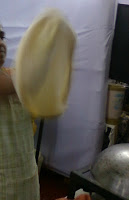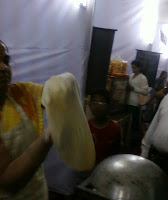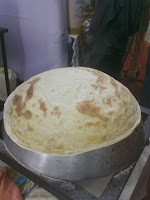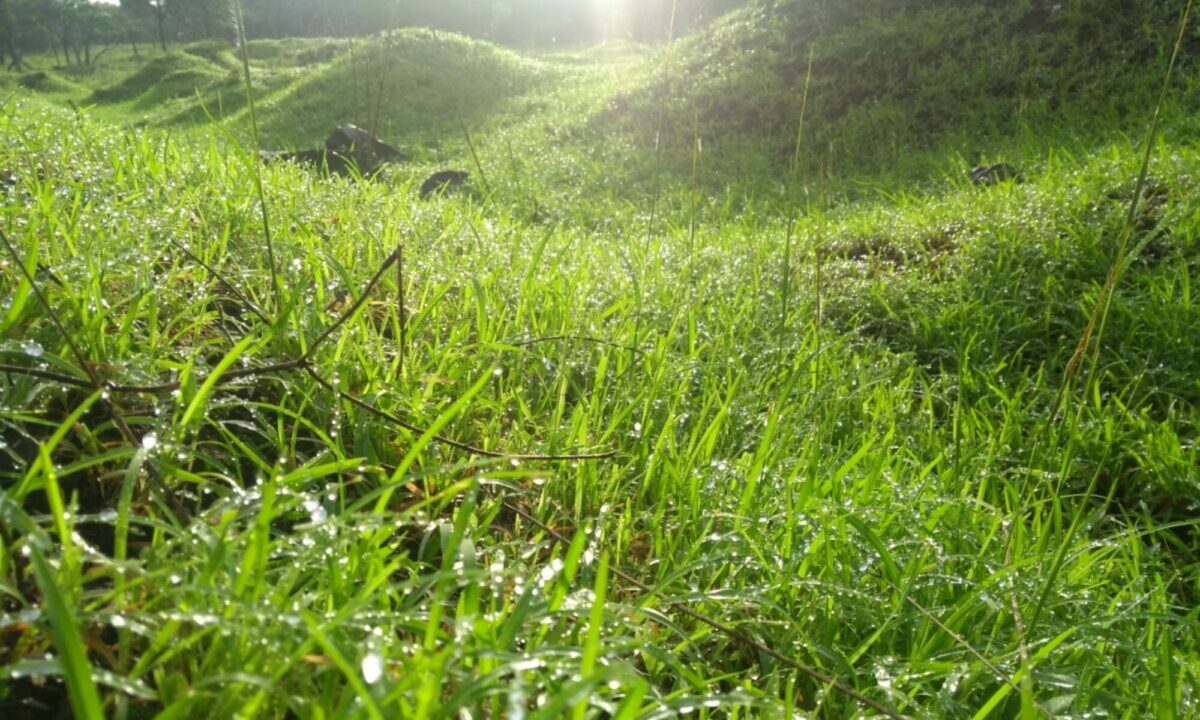Cheers!
Natrang
We watched Natrang- purely because of its music. Heavy promos on TV had us made us total fans of the songs presented in this movie. whose music directors are Ajay-Atul. And we were not disappointed by the movie or the music.
Natrang is the story of an farm labourer (Guna) who has a creative bent of mind. He loves to write poetry, act, sing to the extent of ignoring the well being of his family. Atul Kulkarni has depicted this character wonderfully. He had to put on weight and then loose 20 kgs in order to portray his character. Read about it here. When the landlord installs a pump to draw water from his wells, Guna is out of work and they all face starvation. He is an ardent fan of ‘tamasha’ – a form of folk dance in Maharashtra. Along with his friends he decides to set up a tamasha troupe. That’s when the story takes off. Overcoming all odds the tamasha troupe is ready but for one thing- the lead dancer wants to include a ‘nacha’- a transvestite who was usually a part of such programs. When they are unable to find one Guna decides to play this part.
Thats when the story really begins.
I won’t spoil your enjoyment by sharing what happens thereafter suffice to say Guna achieves his dream of a successful ‘tamasha’ troupe. At a huge price.
Natrang is a story of dreams, losing them but still achieving them at all costs. It also depicts lives of tamasha artists particularly the ‘nacha’. They are ostracised by their society, abandoned by their family, cannot have conventional families and are often the target of various crimes. Atul Kulkarni’s depiction of all these stages in Guna’s life are tremendous.
The movie is based on a book by Dr Anand Yadav. Phulwa’s choreography, Sonalee’s dancing, costumes, the director’s attention to detail makes it a touching and memorable film.
I left the theatre with a sad feeling. I recommend you watch it. At a theater closest to you!
Any body Listening?
Yesterday we received an unexpected disturbing mail stating that WorldSpace services would be discontinued in India with effect from midnight of 31 December 2009. Though thoroughly disturbed we dismissed it as some kind of prankster mail as there was no other news of this development. However today’s Times of India and Economic Times articles confirm this news.
This is really really sad. Our musical bonds with WorldSpace go back to 2001 when we got our first Hitachi receiver when posted in Assam. There was not much by way of entertainment and most of our squadron members had this on the top of their list of must-buy products on arriving there. The best part was that the service was free then. Our favourite channels are Spin, Gandharva, Surabhi, Up Country, Maestro and Holly (available only in the Christmas season).
Besides a total lack of advertisements, the best part is undoubtedly the huge variety on offer. We had music on at all times to suit every mood every taste 24X7. WorldSpace became an undemanding friend who stayed with us through three postings and through our move back into civil life! We will go back to our CDs or music via the Internet but life wont be the same…
One newspaper article mentioned that India had the biggest subscriber base for this company. We read of so many ‘acquisitions’ happening all around the globe particularly in these recession times. Surely surely there would be some one interested in taking over India operations of WorldSpace?? With thousands of customers ready to pay to listen to music and infrastructure in place is this an opportunity that must not missed? Anybody listening?
Silicone Heaven
Being Christmas Day, I decided to investigate some stores that stocked baking items hoping to pick up some things that usually are hard to find or not available in Pune. I had some luck in that department but came across something different… Silicone
Silicone baking ware.
Yes apparently the stuff can be used to bake our cakes, muffins and so on in the oven and microwave.
Here is what I saw: the pans, tins, trays were completely flexible and were kept folded up on the shelf. That seemed to be a huge plus considering the space challenges in our kitchens. I came across this article on Kitchen Butterfly that gives you an in depth idea of what this stuff is, its pros and cons. There are several accompanying pictures so worth reading if you do plan to acquire these new age baking tins. Spatulas, pastry brushes made of silicone were also available. Cost wise the silicone bake ware was modestly costlier than the conventional stuff.
I still need to find out if using silicone to cook will harm our health in any way. And the environment. Once I get answers to these two questions, I may go in for these easy to clean, easy to store silicone bake ware.
Happy Christmas!
Tomorrow
T33/4 was situated at the end of the lane and stood amidst an overgrown bamboo jungle, dwarfed by a huge Seemal and surrounded by bleeding hearts. The two-roomed barrack styled cottage looked romantic bathed in sunlight that streaked through the branches. Come nightfall, it was something straight out of Jurassic Park.
It was past ten and the night was punctuated by the frequent roar of laughter from the Ramsies’ in T33/3. She had excused herself early wanting to tie up loose ends. As usual there was no electricity and Pramila pushed aside the old Feminas and newspapers lying on an old crate that served as a table and lit a candle. She had been working all day and was exhausted. This was the last night she thought with a smile, tomorrow she would finally move into her their ‘permanent’ accommodation. It was the thought of this move that kept her company in their lonely ‘temporary’ home while her husband was away on official business. She removed curtains from the window, dumped their clothes into a suitcase and sat on it hoping her would her weight would bring the edges together. Their belongings and she were ready to move.
The bonfire next door choreographed eerie orange and black figures on her windows Pramila heard some scrabbling and panicked. Where was the torch? She blindly groped in her handbag and her fingers closed around the steel cylinder. In her hurry to switch it on it fell to the ground, and she was on her knees groping to find it. She gingerly moved her hands around the rough cemented floor fearing touching the giant cockroaches that always ran around the moment there was no light. Aaah, there it was… The yellow beam pierced every dark corner as she looked for… she knew not what… Was that an old floor stain or did it wriggle? She had left open a window at the back for some air so could that be a snake? Though the memory was two weeks old, Pramila could still feel the smooth cold skin against her feet as the Machoa gom had slid past her to escape its hiding place behind the bucket in the bathroom. The torchlight outlined a huge rat as it headed for the false ceiling. Relieved, she decided she had done enough for the day.
The transition to this remote location had been difficult. Being a city girl, she couldn’t accept living in this shack that served as their temporary home. ‘Cottage’ meant glorifying this bamboo thatched structure standing amidst grass that grew at least an inch a day. Hence her daily cribs and their daily arguments. He tried to reason with her, “All personnel live here at some point and it is only temporary.” Yet Pramila continued her rantings. Her husband left for his present assignment after one such major fight.
But things seemed to be looking up now. The job at the school was an unexpected opening and they were allotted their brick and mortar home out of turn. Teaching chemistry to 14-year olds was a far cry from her research assistantship at the Institute in Pune but she was willing to compromise. God did listen and she promised herself to turn over a new leaf. Pramila couldn’t wait for him to come home.
She gulped her Calmpose and got into bed. Much as she didn’t want to, she had got into a habit of popping a sedative when alone. A blissful dreamless state kept unwarranted cribs and worries at bay. The night covered her in a thick blanket and the fauna sang for her. The crickets’ set up a crescendo and each movement ended in a refrain by hundreds of frogs. Lizards clicked and chuckled as they raced each other across the walls and she was thankful to the darkness as their sight filled her with revulsion. Tens of mosquitoes buzzed tirelessly around her some making bold dives towards her.
She did not, could not shake away her attackers. Sleep’s velvety claws engulfed her and took control of her mind. Pramila’s limbs seemed to become heavier and heavier as she happily floated between T33/4 and a dark warm world. The candle flame flickered brighter as it ate up the last of wax and the newspapers and magazines below it. She vaguely heard the Ramsies driving off with their guests. A faint pervading acrid smell seemed to be increasing. Her brain flashed cautionary signals but she was in a world apart. Her eyelids and limbs would not respond to urgent commands they received. It was her last night in this dump. Tomorrow, tomorrow she would sleep in proper home…
As the Ramsies drove back, they saw flames leaping out of the cottage at the end of the lane.
Khandeshi Mande
Last week Puneites were spoilt for choice on what to do on the weekend. There was something for the foodies (the Bhimthadi Jatra) and the geeks as well (the IT expo). The Bhimthadi Jatra held on the grounds of the Agriculture college was a showcase for women’s Self Help Groups (SHGs) in Maharashtra. There were over 500 stalls by women entrepreneurs and there are no prizes for guessing what most of the stalls were devoted to!
That’s right Food!!
And what a variety! Absolutely Desi (and I mean from the Marathi heartland) stuff cooked in the authentic manner right in front of you. Fish, chicken, mutton, bhakri, bhajee and more.. served piping hot by ladies who were keen to show that had what it took to run a business even if they were rarely featured in glossy business mags. The best was each took pride in what she did had a good idea of the economics involved and had good marketing skills. I guess there’s more than one place to learn business skills other than ivy league B-schools and that’s the school of Life!
But here is something that was my star of the foodie stalls. Khandeshi Mande stuffed with Puran. To the uninitiated these are huge (around 18″ diameter) puran poli that reach this size not with a rolling pin but by actually stretching it out by hand.
There were two stalls and we had to book and await our turn to get the Mande. Each was priced at Rs 35 but the process of watching the ladies make it was a delight. You may have heard of pizza makers who throw the dough up in the air while making the base. Well the process here is something similar. After stuffing puran (bengal gram cooked with sugar and ground to paste) in the dough made entirely of maida (refined flour) the artist (yes, that’s the only word for the lady making the Mande) initially rolls out a small poli. Thats when the magic starts.
She picks up the poli and begins tossing it in circles over her both her arms as it gradually stretches into a bigger circle. A few minutes and the poli is big enough to be placed on an a huge upturned kadhai (wok) that serves as the griddle. A couple of minutes cooking on either side and lo behold! The Mande is yours! Thin crisp golden with not single tear in it. Drizzle (or drench) with ghee and enjoy!!!
This fair was the fourth one to be held in Pune and hopefully will continue each year. For those who missed it, Bhimthadi Jatra may return.
Here are some photos that will give you an idea of how the Khandeshi Mande were made.



‘Cat’astrophy
The much touted CAT went online this year. While aspirants spent several thousands taking mock computerised tests the suspense till the last moment was expected to be the difficulty level or if those appearing later in the ten-day schedule would have an easier time.
Yet the unexpected happened.
The online examination system crashed not once but repeatedly three times (today is the third day).
While experts will obviously analyse what went wrong. the government has stepped in and asked for a report on what went wrong.
As a parent and lay observer I have some questions:
- There apparently was no back up plan in case something went wrong. Now remember we are talking the top institutes in our country. How can they have overlooked this aspect? Even for a routine dinner party home makers have something to fall back on in case of a disaster. Hey don’t blame me for a mundane comparison. The situation demands it as here we are talking about the future of several thousand aspirants.
- The glitch was blamed on a virus attack. Surely the tech brains should have anticipated this.
- I believe the job of conducting the exam was entrusted to an American firm. India has some top notch tech firms with excellent grey matter. Why could they not have been entrusted with the responsibility?
- Is the CAT and are the IIMs slowly becoming over hyped? Have they been swayed by obscene salaries and prime media time allotted to them when their summer and final placement starts?
- Rescheduling is not easy as almost all Sundays from now onwards are ‘booked’ for entrance exams to other B-schools. Often students appear for more than just the CAT so how do they cope? Remember all tests have a different format…
Obviously a computerised exam is the way forward considering the huge numbers involved, man-hours spent in hall tickets, assimilating all data, correction, results etc. This does not include efforts to set valid questions as often there are reports of mistakes there as well. But we’ll look at that issue another time…
These are some interesting reports:
CAT Chaos on ibnlive.com
Pagal Guy has aspirant views
This report suggests that along with the aspiring candidates, the IIMs too should have taken mock tests.
This is a link to an article on ndtv.com
This article describes the plight of CAT aspirants in Bangalore
Good Luck to those who are yet to appear and those who may have to give the rescheduled test.
Ginger Squares
This is an unusual sweet and spicy preparation ideal for winters.
Ingredients:
125 gms fresh ginger
1 cup milk
1 ½ cup sugar
2 tsp castor sugar
Wash and finely chop ginger. Grind ginger and milk in a blender. Add sugar to this mixture and cook on a low flame till thick. Remove from heat and add a little castor sugar and mix thoroughly. Put into a greased plate and let cool. Cut into small squares to serve.
Enjoy! Have a Healthy winter!
Where Love Has Gone?
I read in the papers that 19 November was celebrated as International Men’s Day but from some reports suggest this seems to have been marked more as the International Husband’s Day. Read this news from the Hindustan Times.
Whoa there.. I was under the impression that it was us the weaker (and fairer) sex that was the one that were subjected to atrocities, dowry harassment and more. Countless zealous women’s welfare organisations must have obviously worked zealously for us to have reached this state. Is this really the state of affairs? Has the equation changed?
I read about an organisation called Purush Suraksha Sanstha in Maharashtra. There were many more and affected groups actually converged together to fight for their rights. Read this news. There are reports that like women, some husbands (and quite a frightening number that) committed suicide due to harassment. Bangalore based Save Indian Family Foundation has taken up this cause.
Times certainly are changing. It took quite some time for us to accept that men could actually turn tormentors to their wives but never ever did I imagine things going to this extent.
Divorce rates are increasing alarmingly as well.
Where are we heading?
Think about it.
Wake up
How often have you been accosted by someone selling you insurance? I am not referring to telecallers but someone from your friend or family circle, an acquaintance? Quite often right?. Many times a person ‘buys’ an insurance policy just because all their neighbours were buying it. Some buy policies for their beloved without even inquiring mode of payment when the policy matures and how exactly does the beloved benefit.
Very few agents bother to explain details to you unless you ask. Even then some are not really clued up. Agents get ‘commission’ for all policies they sell. This may be up to 15-30% of the first premium you pay (can even go up to 60% in some cases!!). That means if you pay Rs 10,000 the amount actually going towards your corpus will be only Rs 7,000. Read this article on livemint.com for more. For some policies (called products) almost the entire first premium goes towards agents’ commission, marketing costs etc.
Did you know that? Did you ever find out?
I admit I did not.
Yesterday I watched a very interesting interview of Mr Swarup, Chairman PFRDA on NDTV Profit by Manisha Natrajan. The organisation is in the process of revamping the process of selling insurance in India. The entire exercise is totally focused on the consumer (you and me who buy policies). The aim is to bring in transparency and accountability to the process of insurance selling by agents. I was impressed by Mr. Swarup’s clarity of thought and determination. He has a tough job ahead of him as obviously agents will resist this move tooth and nail.
Visit this link for a PDF on a consultation paper the PFRDA has released on its website. It covers common minimum standards for financial advisors and financial education. Its long (30 pages) but very simply written and all of us MUST read and understand implications of this major and radical move by PFRDA.
Not many nations in the world have such systems in place but must we always be ‘followers’ can we not be ‘leaders’ in financial reforms?
When buying insurance understand what is it that you really need cover for, which products offer it to you, what does the fine print say, what is not covered. Most important, your agent has to answer all these questions and guide you to a proper choice. He also has to reveal the commission that he will get (that is embedded in the premium you pay). His job is not only to help fill up forms and give you service at home, he must give you service for the entire duration of the policy (15/20/30 years etc).
Don’t we pick and choose our potatoes and onions and look for the best bargain when buying a new HD TV?
Then why this laxity when buying insurance? In times of crisis this is what will help you.
Wake up. Be aware.
